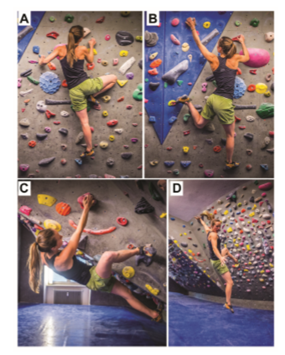The Acute Effect of Cryotherapy on Muscle Strength and Shoulder Proprioception
Introduction
Cryotherapy is a common intervention used in clinical and athletic environments, especially for acute injuries. Common forms of cryotherapy include an ice pack, ice massage, and cold-water immersion. Cryotherapy is used to decrease injury-related pain, muscle spasms and swelling. However, the cooling effect of cryotherapy can harm neuromuscular function, including muscle strength and proprioception. Proprioception is an individual’s ability to sense joint position, movement, and force as a means to discriminate body movement. The authors in the study, The Acute Effect of Cryotherapy on Muscle Strength and Shoulder Proprioception, analyze how cryotherapy affects the maximal force production of the shoulder external and internal rotator muscles and shoulder proprioception.
Methods
A randomized double-blind controlled trial was performed on 48 healthy women. The participants were randomly assigned to either the experimental or control group. The experimental group had 15 minutes of cryotherapy in the form of a crushed ice pack applied to shoulder and the control group had a body-temperature sand bag applied to the shoulder. Maximal voluntary isometric contraction (MVIC), force sense, threshold to detect passive movement (TDPM) and joint position sense (JPS) of the shoulder rotator muscles were assessed immediately before and after the intervention.
Muscle Strength Assessment
The MVIC of the shoulder’s internal and external rotators was recorded both before and after cryotherapy treatment. A dynamometer was used to record three MVICs and the average was recorded.
Force Sense Assessment
The force-matching procedures for the internal and external shoulder rotators were conducted at 20% and 50% of the participant’s MVIC. For force sense testing, participants were positioned like the MVIC assessment and instructed to achieve the target force using visual feedback. They were then asked to perform the same contractions without visual feedback. The mean from three trials was used for analysis.
Joint Position Sense Assessment
The authors passively positioned the participants’ shoulder into position and maintained for five seconds so the participant could memorize the position. The participant then actively moved her shoulder into the same position. The participants were blindfolded and wearing headphones during this test. Each participant performed this test three times and the average score was recorded.
Threshold to Detect Passive Movement Assessment
The participants were placed in the same seated conditions used to test JPS. Each participant was asked to press the remote button upon sensing any movement or change relative to the initial shoulder position, which was engaged at random by the tester. Three trials from two starting positions were used, and the shoulder was moved into either the internal or external shoulder rotation.
Results
The cryotherapy reduced the skin temperature of the experimental group to 12.5 degrees Celcius compared to 33.5 degrees Celcius in the control group as measured by a skin thermometer.
MVIC: There was significant impairment in the force production of both the shoulder internal and external rotator muscles by approximately 10% of muscle strength in the experimental group.
Force Sense: There were no significant changes in both muscle groups at 20% and 50% of MVIC in the experimental group when compared to the control.
JPS: The error of JPS in external and internal rotation increased significantly in the experimental group post-cryotherapy application.
TDPM: Cryotherapy significantly diminished the participant’s ability to detect motion in the rotator muscles.
Conclusions and Physical Therapy First Implications
The results of this study demonstrate impairments of shoulder strength and proprioception following cryotherapy application. These results suggest that application of an ice pack is harmful when it precipitates activity or exercise. There is a growing consensus that reduced shoulder proprioception increases the risk for sustaining a musculoskeletal injury. Athletes and trainers shoulder be educated on the proper timing of cryotherapy application for overhead athletes in order to decrease the risk for injuries. Cryotherapy is a modality we administer during rehabilitation which can help to reduce pain, swelling, and muscle spasm. At Physical Therapy First, we are conscious about the timing of cryotherapy intervention.
Reference:
Torres, R., Silva, F., Pedrosa, V., Ferreira, J., and Lopes, A. (2017). The Acute Effect of Cryotherapy on Muscle Strength and Shoulder Proprioception. Journal of Sport Rehabilitation. 26, 497 -506

